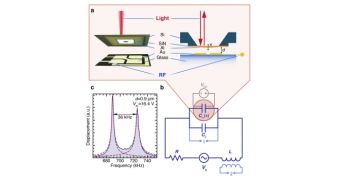Some people might not believe it, but light is just that narrow section of the electromagnetic spectrum that we humans can perceive with our eyes.
In the end, light is similar to radio waves. This must be why scientists were able to devise a light-based method of detecting such waves.
Tolga Bagci at the University of Copenhagen in Denmark and a group of friends have demonstrated a device that detects weak radio waves by converting them into light signals, which can be transmitted and analyzed using standard optical tools.
“Our work introduces an entirely new approach to all-optical, ultra low-noise detection of classical electronic signals,” they said.
A thin nanomembrane of silicon nitride, coated with a mirror-like layer of aluminum, is suspended above an electrode, forming a capacitor.
Said capacitor is part of an LC-circuit that picks up the radio waves at its resonant frequency.
Read more on the matter here.

 14 DAY TRIAL //
14 DAY TRIAL //